What Do Warblers Eat and How to Attract Them
Updated: Apr. 19, 2022
Find out what do warblers eat? See how to lure orange crowned warblers, yellow throated warblers, Townsend’s warblers and more.
Our editors and experts handpick every product we feature. We may earn a commission from your purchases.
What Foods Do Warblers Eat?
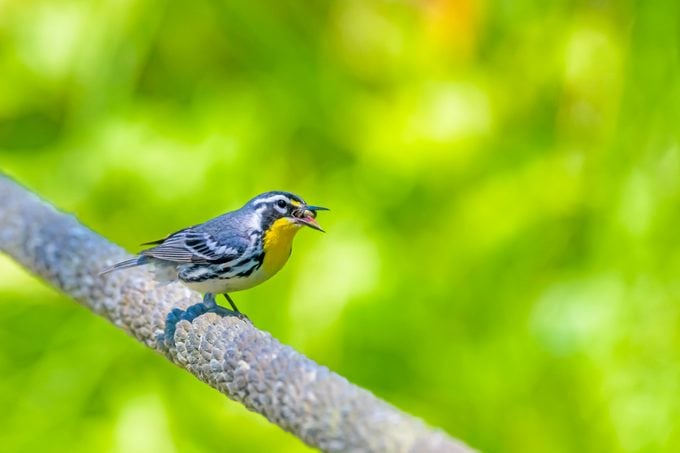
Common backyard birds, such as cardinals and goldfinches, love to dine on seeds. But what do warblers eat? These cherished arrivals in the spring tend to avoid bird feeders, so bird lovers need other ways to attract them.
“Most warblers are insectivorous and won’t eat seeds,” says Emma Greig, project leader for the Cornell Lab of Ornithology’s Project FeederWatch. “Many warbler species glean insects from treetops and dense foliage, so they aren’t interested in an exposed feeder.”
Check out 33 pictures of warblers that will make you want to go birding.
Which Warblers Will Visit Backyard Feeders?
Some exceptions exist, though. “Fortunately, a few warbler species are brave enough to visit suet feeders,” says Emma.
Here’s how to tell the difference between a yellow warbler vs a goldfinch.
Yellow Throated Warbler
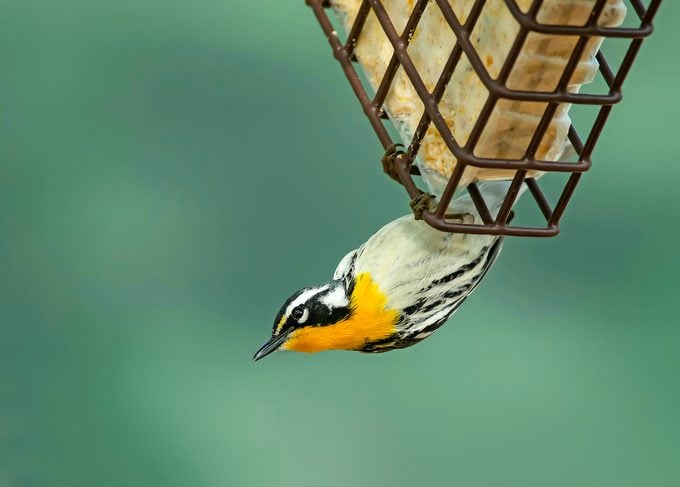
Emma notes that the yellow throated warbler is a special visitor in the Southeast. Its distinctive black, gray and white coloring, combined with a vivid sunny chin, makes this bird a real treat to spot.
Look and listen for common yellowthroats in spring.
Yellow Rumped Warbler
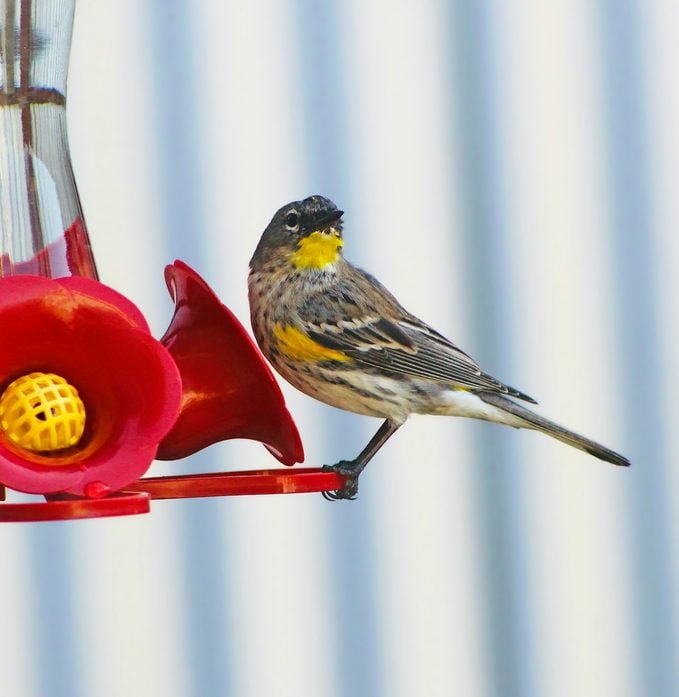
Yellow rumped warblers also have splashes of yellow, but they’re mainly at the side of the chest and above the tail feathers. They are widespread in the U.S. and sometimes visit seed as well as suet feeders. In the East, they may form mixed flocks with brownish yellow pine warblers, a species that also enjoys suet and seeds.
“Our yellow rumped warblers manage to sneak a few drops from our hummingbird feeders daily,” says Birds & Blooms reader Deborah Atherton of San Diego, California.
Discover the top warbler hotspots to visit.
Orange Crowned Warbler
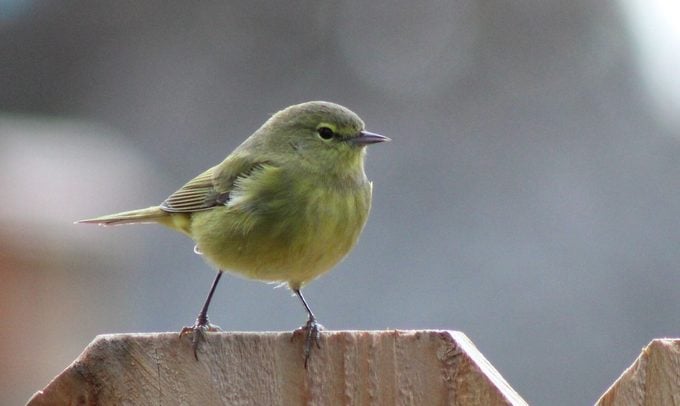
Wide-ranging orange crowned warblers, too, stop by feeders. They’re a somewhat drab olive-yellow with an orange head patch that is typically hard to spot, but they’re fun to watch as they puncture flowers to drain the nectar. They’ll also check out hummingbird feeders at times.
Don’t miss these breathtaking Blackburnian warbler photos,
Townsend’s Warbler
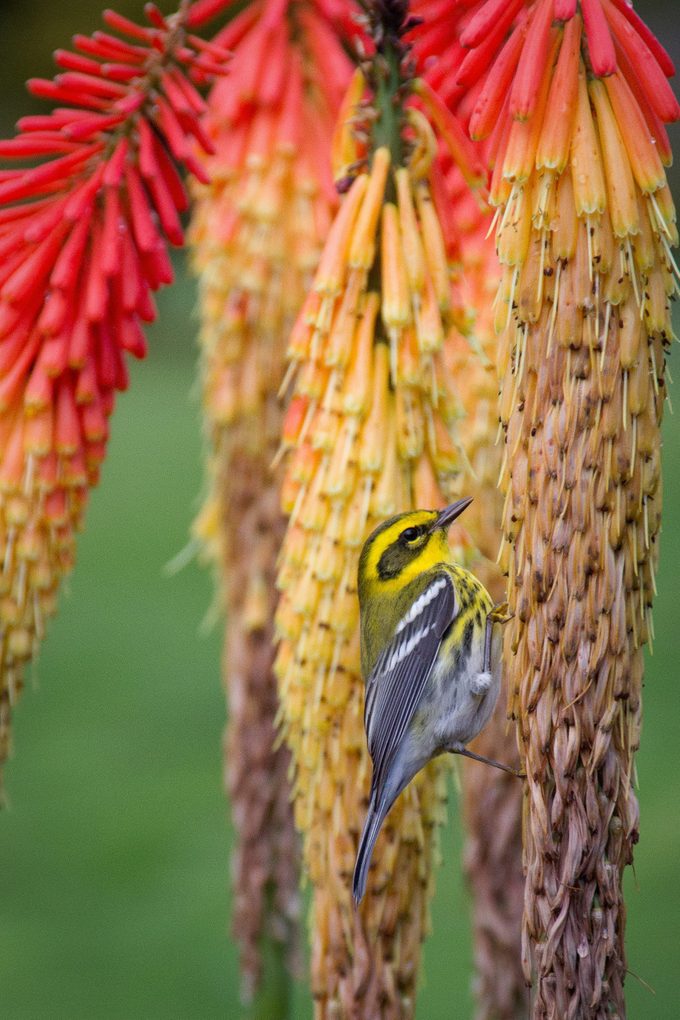
Out west, Townsend’s warblers, with their yellow-and-black-striped heads, show similar behaviors. They especially love to drink from flowers during spring migration and may drop by a mealworm feeder or sugar-water feeder.
Attract a prothonotary warbler with a birdhouse.
Serve Suet to Attract Warblers
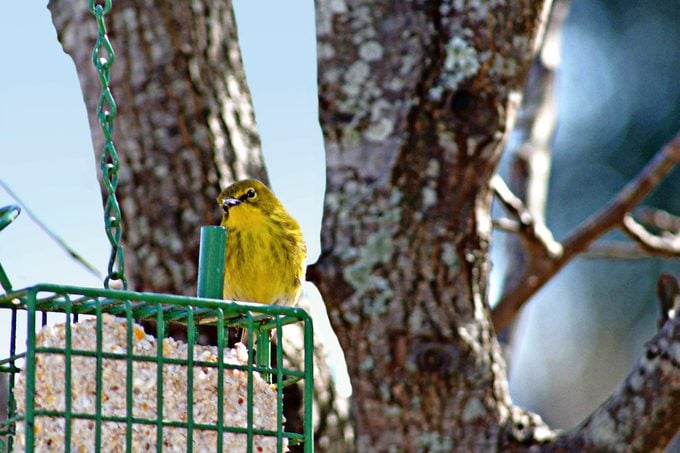
Winter and early spring are the ideal times to attract warblers to your backyard. “Suet is best offered in cooler weather so it won’t melt or go rancid,” says Emma. “That’s also when warblers need an extra boost, since insects aren’t readily available.”
Look for high-quality suet cakes with mealworms and be sure to choose no-melt versions if spring is warmer in your area.
Psst—we have warbler migration tips for every type of birder.
Create a Warbler-Friendly Habitat
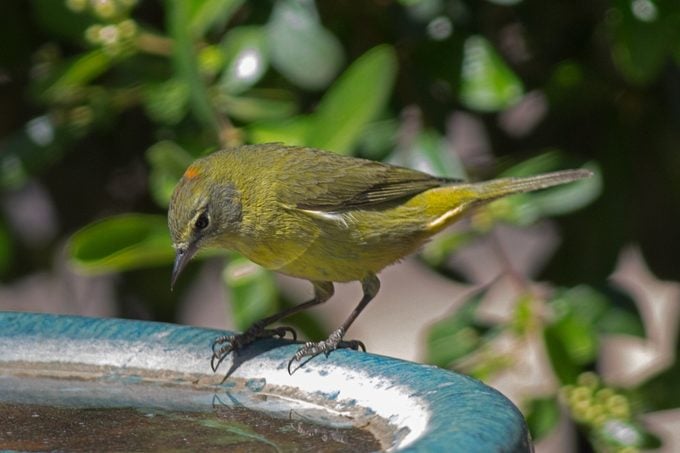
Feeders aren’t the only way to entice warblers. Bird baths draw warblers for a clean drink and quick dip. Use a water wiggler or a solar fountain to tempt birds while keeping mosquitoes at bay.
“Trees, shrubs and native plants that promote healthy insect populations are the perfect way to support warblers,” Emma says. “Don’t use pesticides in your yard. The more insects that are around (for warblers to eat), the better.”
Psst—remember that not all backyard insects are troublemakers! Here are 8 bugs you should never kill in your garden.
Warbler visits to feeders may be rare, but that makes them all the more treasured. Report sightings to Project FeederWatch to help scientists learn more about these special birds.
Next, learn all about black-throated blue (and green!) warblers.




















